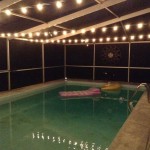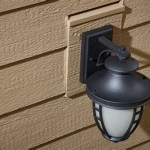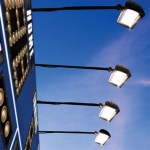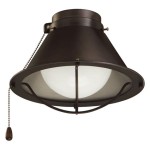Illuminate Your Evenings: A Comprehensive Guide to Outdoor Path Lighting
Outdoor path lighting serves a dual purpose, enhancing both the aesthetic appeal and the safety of residential and commercial properties. Strategically placed lighting fixtures along walkways, driveways, and garden paths not only create an inviting ambiance but also minimize potential hazards by illuminating potential obstacles and providing secure passage during nighttime hours. This article provides a detailed overview of outdoor path lighting, covering various types of fixtures, installation considerations, and their numerous benefits.
Enhancing Safety and Security
One of the primary benefits of outdoor path lighting is its contribution to safety and security. Well-lit pathways reduce the risk of trips, falls, and other accidents that can occur in dimly lit or unlit areas. This is particularly crucial for elderly individuals, those with mobility issues, and families with young children. By illuminating the path, obstacles such as uneven surfaces, steps, and garden edges become clearly visible, minimizing the potential for injury.
Beyond accident prevention, path lighting acts as a deterrent to potential intruders. A well-illuminated property signals that it is actively monitored and cared for, making it less appealing to burglars and vandals. Motion-activated lights can further enhance security by automatically illuminating the area when movement is detected, alerting residents to potential threats and deterring unwanted visitors. This proactive approach to security provides peace of mind and contributes to a safer living environment.
Choosing the right type of path lighting is critical for effective security. Low-level lighting that casts a wide beam can illuminate the entire path without creating harsh shadows, while strategically placed spotlights can highlight specific areas of concern, such as entrances and vulnerable points of access. Combining different types of lighting fixtures can create a layered security system that effectively protects the property.
Furthermore, considering the color temperature of the light is essential. Warmer light temperatures (around 2700-3000K) are generally more inviting and comfortable for residential settings, while cooler light temperatures (around 4000K or higher) provide better visibility and can be useful in areas requiring enhanced security, such as commercial properties or areas with high foot traffic.
Creating Aesthetic Appeal and Ambiance
Outdoor path lighting plays a significant role in enhancing the aesthetic appeal of a property. Well-designed lighting schemes can transform ordinary pathways into visually stunning features that complement the landscape architecture and architectural style of the building. By strategically placing lights to highlight key elements of the garden or walkway, homeowners can create a welcoming and inviting atmosphere.
The design possibilities are virtually endless, ranging from traditional lanterns and post lights to modern bollards and recessed ground lights. Each type of fixture offers a unique aesthetic and functionality, allowing for a customized approach to path lighting. For example, traditional lanterns can evoke a sense of classic elegance, while sleek and minimalist bollards can add a touch of contemporary sophistication. Recessed ground lights provide subtle illumination without obstructing the view, making them ideal for highlighting pathways and garden features.
Beyond the type of fixture, the placement and spacing of the lights are crucial for creating the desired ambiance. Lights should be spaced evenly along the path to provide consistent illumination, avoiding dark spots and overly bright areas. Consider using a combination of up-lighting and down-lighting to create depth and dimension, highlighting both the path surface and the surrounding landscape. Up-lighting can be used to accentuate trees, shrubs, and architectural features, while down-lighting provides focused illumination for walkways and steps.
The color temperature of the light also influences the overall ambiance. Warmer light temperatures create a cozy and inviting atmosphere, while cooler light temperatures can feel more modern and sophisticated. Experimenting with different color temperatures can help homeowners achieve the desired effect, tailoring the lighting to their personal preferences and the overall design aesthetic of the property.
Types of Outdoor Path Lighting Fixtures
The market offers a wide variety of outdoor path lighting fixtures, each with its own unique characteristics and applications. Understanding the different types of fixtures is essential for selecting the most appropriate lighting solution for a specific project.
1. Post Lights: Post lights are mounted on posts and are typically used to illuminate larger areas, such as driveways and walkways. They provide a broader distribution of light compared to other types of path lighting and are available in a wide range of styles, from traditional lanterns to modern designs. Post lights are a good choice for properties with a classic or traditional aesthetic.
2. Bollard Lights: Bollard lights are short, vertical fixtures that are typically used to line pathways and walkways. They provide low-level illumination and are ideal for creating a subtle and elegant ambiance. Bollard lights are available in a variety of materials, including metal, plastic, and wood, and can be easily integrated into any landscape design. Their durability and resistance to weather elements make them a popular choice for both residential and commercial applications.
3. Path Lights (Stake Lights): Path lights, often referred to as stake lights, are small, decorative fixtures that are inserted into the ground along pathways and garden beds. They are typically used to provide low-level illumination and are available in a wide range of styles and finishes. Stake lights are easy to install and can be moved as needed, making them a flexible option for homeowners who like to change their landscaping frequently. They are often used to highlight specific plants or features within a garden.
4. Recessed Ground Lights: Recessed ground lights are installed flush with the ground surface and provide subtle illumination without obstructing the view. They are ideal for highlighting pathways, driveways, and patios. Recessed ground lights are available in a variety of sizes and shapes and can be used to create a seamless and integrated lighting design. They are also resistant to damage from foot traffic and lawn equipment.
5. Step Lights: Step lights are specifically designed to illuminate steps and stairways, providing added safety and visibility. They are typically mounted on the risers or sides of steps and are available in a variety of styles and finishes. Step lights are essential for preventing accidents on steps, especially in dimly lit areas. They can also be used to create a decorative effect, highlighting the architectural details of the stairs.
6. Solar Lights: Solar lights are powered by the sun and do not require any wiring, making them easy to install and maintain. They are an environmentally friendly option and can be used in a variety of applications, including path lighting, garden lighting, and accent lighting. However, the performance of solar lights can be affected by weather conditions and the amount of sunlight they receive. They are typically less bright than traditional electric lights.
Factors to Consider When Choosing Path Lighting
Selecting the right outdoor path lighting requires careful consideration of several factors, including the size and layout of the property, the desired aesthetic, and the budget. Before making any decisions, it is important to assess the specific needs and requirements of the project.
1. Light Output and Brightness: The appropriate light output (measured in lumens) depends on the size and length of the pathway and the surrounding environment. For shorter pathways and areas with existing ambient light, lower lumen lights may be sufficient. Longer pathways and areas with minimal ambient light will require higher lumen lights to provide adequate illumination. Avoid choosing lights that are too bright, as they can create glare and be uncomfortable for the eyes.
2. Style and Design: The style and design of the path lighting should complement the architectural style of the building and the overall landscape design. Choose fixtures that are aesthetically pleasing and enhance the visual appeal of the property. Consider the color, finish, and shape of the lights to ensure they blend seamlessly with the surroundings.
3. Material and Durability: Outdoor path lighting fixtures are exposed to the elements, so it is important to choose materials that are durable and weather-resistant. Common materials include metal, plastic, and composite materials. Metal fixtures are typically more durable and long-lasting, but they can also be more expensive. Plastic and composite fixtures are more affordable and lightweight, but they may not be as resistant to damage from UV rays and extreme temperatures.
4. Energy Efficiency: Opt for energy-efficient lighting options, such as LED lights. LED lights consume significantly less energy than traditional incandescent or halogen lights and have a longer lifespan, reducing energy costs and maintenance requirements. LED lights are also available in a wide range of color temperatures, allowing for greater flexibility in creating the desired ambiance.
5. Installation and Maintenance: Consider the ease of installation and maintenance when choosing path lighting. Some fixtures are easy to install and require minimal maintenance, while others may require professional installation and regular upkeep. Solar lights are typically the easiest to install, as they do not require any wiring. Electric lights may require professional installation to ensure safety and compliance with local building codes. Regular cleaning and maintenance will help to prolong the lifespan of the fixtures and ensure optimal performance.
6. Budget: Path lighting costs can vary widely depending on the type of fixture, the material, and the brand. Establish a budget before starting the project and choose fixtures that fit within the allocated budget. It is important to balance cost with quality and durability to ensure that the chosen lighting solution provides long-term value.
Installation Tips and Best Practices
Proper installation is crucial for ensuring the safety and effectiveness of outdoor path lighting. Following these tips and best practices can help homeowners achieve professional-looking results:
1. Plan the Layout: Before installing any lights, plan the layout carefully. Determine the optimal placement of the fixtures to provide adequate illumination without creating glare or dark spots. Consider the location of existing trees, shrubs, and other obstacles that may affect the distribution of light.
2. Follow Local Codes: Ensure that all electrical work complies with local building codes and regulations. If unsure, consult with a qualified electrician to ensure that the installation is safe and meets all applicable requirements.
3. Use Proper Wiring: Use outdoor-rated wiring and connectors to protect against moisture and corrosion. Bury the wiring in conduit to prevent damage from lawn equipment and foot traffic. Use waterproof connectors to ensure that the connections are secure and protected from the elements.
4. Test the Lights: Before burying the wiring, test the lights to ensure that they are working properly. Check the voltage and amperage to ensure that they are within the recommended range. Troubleshoot any problems before proceeding with the installation.
5. Conceal the Wiring: Conceal the wiring as much as possible to create a clean and professional look. Bury the wiring in conduit or run it along the edges of the pathway or garden bed. Use landscape staples to secure the wiring in place and prevent it from being pulled out of the ground.
6. Consider Timers and Sensors: Consider using timers and motion sensors to automate the lighting and improve energy efficiency. Timers can be programmed to turn the lights on and off at specific times, while motion sensors can activate the lights only when movement is detected. These features can help to conserve energy and reduce light pollution.
By carefully considering these factors and following these installation tips, homeowners can effectively enhance the safety, security, and aesthetic appeal of their properties with outdoor path lighting.

Landscape Lighting For An Outdoors Par Excellence Outdoor Garden Design

Outdoor Pathway Lighting Mike S Landscape

Home Decorators Collection 30 Watt Equivalent Low Voltage Brass Led Outdoor Landscape Path Light And Spot Kit 6 Pack Kecp20 The Depot

4 Ideas For Lighting Up Your Outdoor Pathways And Why It Is Important

Hardscaping 101 Pathway Lighting Gardenista

Designing A Landscape Lighting System Ideas Advice Lamps Plus

15 Stylish Landscape Lighting Ideas Garden Club Outdoor Path

Path Lighting Ideas Landscaping Network

Landscape Lighting 2modern

Max Spread Copper Path Light Volt Lighting
Related Posts







